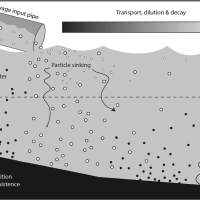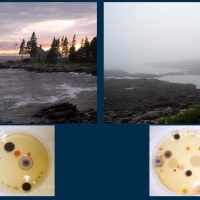The Impact of Water Quality on Human Health
Water, in its gentle trickles and powerful torrents, is the pulse of our planet. It hydrates, nurtures diverse ecosystems, and is fundamental to life as we know it. Yet, what happens when this indispensable resource is tainted? Amidst the blue hues of our world, the role of water extends beyond mere sustenance to shaping life's excellence. Our writers from the best extended essay writing service can describe this in detail in their essays.
The condition of this life-sustaining liquid carries critical implications for the health and well-being of populations globally. In areas with robust infrastructure, it's effortless to disregard the integrity of our H2O sources. However, the uncomfortable reality is that aquatic contamination is a pervasive problem. From hazardous substances penetrating groundwater to industrial waste corrupting rivers, these threats are omnipresent and unforgiving.
The concept of water quality may not be as frequently discussed as, say, the ease with which one could buy term papers online, but it's certainly no less vital. Exploring the complexities of the purity of our vital fluid isn't simply an academic exercise. It carries direct consequences for our health, prosperity, and the viability of our planet. Knowledge about how the standard of water impacts human health allows us to make informed decisions, champion cleaner aquatic resources, and contribute to global health improvement.
This article invites you on a journey into the interplay between the grade of the liquid life source and human health, unveiling its multifaceted significance. So, pour yourself a glass of H2O and get ready to delve into the under-recognized world of the quality of the life-sustaining liquid, and its broad implications for our well-being.
Unveiling the Mystery: What is Water Quality?
Have you ever paused, mid-sip, to contemplate what's really in that glass of water you're drinking? Beyond the fundamental H2O, have you pondered what could be concealed within the depths of that seemingly clear liquid? This brings us to the core of what we term 'water quality'.
Water quality captures the chemical, physical, and biological aspects of this vital resource. It gauges the state of H2O concerning the needs of living organisms or any human requirements or goals. This spans from personal consumption and recreational uses to the well-being of local ecosystems.
To fully understand water quality, it's crucial to identify what components should or shouldn't be present. In an ideal state, this vital fluid comprises only two hydrogen atoms and one oxygen atom. Water, in its natural state, often carries a myriad of substances, some potentially harmful to both humans and the environment, like bacteria, viruses, heavy metals, or specific organic compounds. We measure the purity of H2O by evaluating various indicators, like temperature, pH level, dissolved oxygen, and the presence of detrimental bacteria, as well as different chemical levels. These include nitrates, phosphates, and heavy metals.
Understanding these factors allows us to determine whether this essential resource is fit for its intended use. Good aquatic resource condition indicates safety for all its purposes - drinking, cleaning, agriculture, or supporting aquatic life.
Understanding water as a complex resource carrying a narrative of its journey through the environment is vital in safeguarding our invaluable aquatic resources and, in turn, our health and the planet's wellbeing.
Pouring Facts: The Health Impacts of Poor Water Quality
Samuel Taylor Coleridge's "The Rime of the Ancient Mariner" presents a haunting portrayal of a world filled with water yet devoid of a single potable drop. This sentiment tragically echoes the reality of millions worldwide. An alarming number of people worldwide still lack access to clean and safe H2O, leading to grave health implications. The issue of poor aquatic standards extends beyond geographic boundaries, representing a global problem that urgently needs addressing.
-
The Hidden Threat of Waterborne Illnesses
The detrimental health impacts of polluted water often manifest in the form of waterborne illnesses. Fatal diseases such as cholera, dysentery, typhoid, and polio can arise from consuming such contaminated sources. These illnesses are particularly prevalent in regions lacking sufficient sanitation measures.
Although these health concerns are more common in less developed regions, they are not exclusive to these areas. Contamination of this vital liquid’s supply can trigger disease outbreaks anywhere, irrespective of the country's development status. The cryptosporidiosis outbreak in Milwaukee, USA, in 1993 serves as a stark reminder, being one of the largest known cases of such an incident.
-
Long-lasting Health Impacts of Polluted Water
While waterborne diseases pose an immediate and palpable danger, substandard H2O quality also contributes to more stealthy, long-term health consequences. These are often attributed to the presence of harmful chemicals in the water.
Harmful heavy metals like lead, mercury, and arsenic can infiltrate aquatic supplies naturally or due to human activities like industrial waste disposal or pesticide runoff. Extended exposure to these metals can result in severe health conditions, including damage to the brain and central nervous system, skin diseases, cancers, and cardiovascular diseases.
Likewise, organic pollutants like pesticides and industrial chemicals can cause a range of health effects from cancers to neurological disorders and endocrine disruption.
The stark reality is, the glass of water from which you're drinking may harbor more than just essential hydration. Depending on its quality, it might also carry unseen threats to your health. In the sections to follow, we'll delve deeper into common contaminants and their sources, empowering you to better understand and navigate the intricacies of H2O purity.
-
Global Perspective: The State of Water Quality Around the World
Water quality is a tale of extremes, varying from the pristine springs of Iceland to the heavily contaminated rivers in industrial cities. While some enjoy ready access to clean, safe water, others are not as privileged. A deep dive into the global aquatic standard landscape reveals stark disparities and emphasizes the immediate need for proactive measures.
Water Quality Challenges in Developing Economies
Clean water access remains a significant hurdle in numerous emerging economies. An estimated 2 billion people worldwide are reliant on H2O sources tainted with fecal matter, according to the WHO. These circumstances, combined with inadequate sanitation and sewage treatment, particularly in areas like Sub-Saharan Africa and South Asia, fuel the propagation of illnesses. Additionally, the problem of pollution exacerbates in cities undergoing swift urbanization.
-
Industrialized Nations: Not Spared
The challenges associated with aquatic resource integrity are not confined to developing countries. In industrialized nations, although access to purified H2O is usually less of a concern, industrial and agricultural activities often negatively impact aquatic ecosystems.
Occurrences such as the Flint Crisis in the US illustrate the potential threat of lead contamination. In contrast, in Europe, farming runoff has consistently been a primary source of nitrate pollution.
-
Climate Change: A Universal Threat to Aquatic Integrity
Climate change emerges as a formidable adversary against global aquatic health. Heightened temperatures may instigate more frequent and severe droughts, limiting water availability and increasing pollutant concentration in aquatic bodies. Moreover, excessive precipitation events can result in escalated runoff, carrying an augmented load of pollutants into our hydration sources.
Regardless of the geographic context, the preservation and enhancement of water health should be a priority. As we delve deeper into our investigation of the health of this precious resource in the following section, we'll provide you with the insights needed to participate in the solution. We will explore potential strategies to boost the integrity of this vital resource and protect our health, from individual actions to collective initiatives.
Filtering the Solutions: Ways to Improve Water Quality
As we strive towards a future of clean, safe water for all, we each have a critical part to play. Through conscious decisions at home or advocating for systemic change, we can all contribute to water quality improvement.
Individual Actions for Cleaner Water
Your everyday actions can have a profound impact on water quality. Here are a few steps you can take:
- Minimize chemical use. Limiting your use of harmful chemicals at home, like certain cleaning products or pesticides, can reduce the risk of these substances entering our waterways.
- Proper disposal. Never dispose of medications, paints, or motor oil down the drain. These substances can contaminate water bodies and be difficult to remove during the treatment.
- Water conservation. By using this vital resource efficiently, you can help maintain the health of your local supply, especially in areas prone to drought.
Community Engagement and Advocacy
Change on a larger scale often starts at the community level. Here's how you can get involved:
- Support clean water initiatives. Advocate for policies and regulations that protect water quality. This could include supporting better wastewater treatment infrastructure or stricter pollution controls for industries.
- Participate in local cleanups. Join or organize local cleanup events in your area. This not only improves the standard of local H2O but also fosters a sense of community responsibility toward water health.
- Education and awareness. Share the knowledge! By educating others about the importance of water quality, you can spread awareness and inspire action.
Support Sustainable Practices
Lastly, let's not forget the macro perspective. Supporting sustainable agricultural practices and responsible industries can lead to less water pollution. Remember, every drop counts and every action toward improving aquatic quality contributes to a better future. Together, we can ensure clean, safe water for everyone, safeguarding the health of future generations.
The Ripple Effect of Clean Water
Water serves as the planet's life-support system, where its quality directly correlates with our personal health, the wellness of our communities, and the vitality of our ecosystems and economies. As we navigated this exploration of water quality and its significant impact on human health, one fundamental truth emerged: our actions indeed make a difference.
Every decision we make, from selecting household cleaning products to advocating for public policies, creates waves of influence that could either exacerbate the issue or contribute towards a solution. While the challenges may seem formidable, there are numerous strategies, as we've discovered, that we can employ to enhance water quality.
On an individual level, taking proactive measures to understand and secure the safety of our local water supply serves a dual purpose. Not only does it safeguard our health, but it also empowers us to become knowledgeable consumers and vocal advocates.







